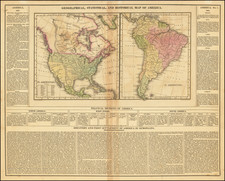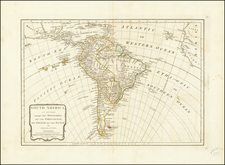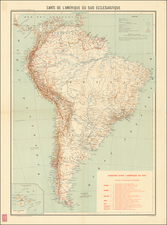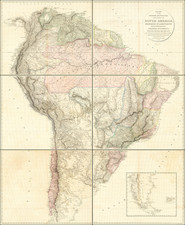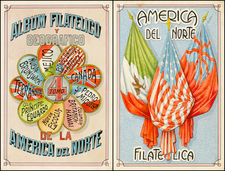Fascinating and apparently unique example of this remarkable chart of the harbor and environs of Rio De Janeiro, undertaken by the fledgingly "Royal Society of Geographical Art" in Potsdam.
The map provides a fantastically accurate and scientifically well excecuted treatment of Rio De Janeiro. The large inset of the Plan of the Bay of Rio De Janeiro is credit to "Capt Barral's Survey with additions from Royal Prussian Navigators." This is apparently a reference to the French Naval Captain L.M. Barral, who undertook a survey of the region in 1831 and 1832. A second inset of Port Frio is shown, bassed upon the surveys of Lieutenant H. Kellet of the British Royal Navy. Berhgaus also includes a methodical and remarkably detailed Longitudinal Note, with historical observations dating back to the 1780s.
This is without question one of the most fascinating 19th Century Sea Charts we have encountered, providing a window into the brief but intensive effort on the part of Prussian chart makers to produce sea charts of the region, which may have been spurred in part by the comprehensive study done by Alexander von Humboldt in the region and the follow up interest in Germany for trade, commerce and exploration in the region.
This chart is a strange an remarkable rarity. We can find no other examples of the chart in any collection, although we note one other English language sea chart published by the Royal Society of Geographical Art in 1839 and also credited to Henry Berghaus: www.raremaps.com/gallery/detail/0333gh.
It is indeed curious that for a very brief period, there was a burst of energy to create charts of the South American coastline in Prussia. The fact that such charts were published in English probably reflects the desire to create something commercial competitive with the English chart makers of the period. We believe that it is possible that the chart was made for Prince Adalbert or somehow relates to the publication of his seminal work on Brazil, which did not include any maps.
Henry Guillaum Adalbert of Prussia self published his Skizzen zu dem Tagebuch in Berlin in 1842-1843. Berlin. This self published work is of the utmost rarity, as it was only sent as gift to the Prince´s friends and family and never offered for sale. Prince Adalbert (1811 - 1873), was son of Prince William, uncle of Frederick William, King of Prussia; he visited Europe and Greece and then went on to Brazil, greatly motivated by Humboldt. In 1842, visited South America,going from Rio de Janeiro to the rivers Paraiba, Amazonas and Xingú, thereafter creating a fantastic illustrated work of his travels, in the style of Humboldt.
Our research into "Henry Bergaus" locates several maps published using this name. In fact, "Henry Berghaus" is Henreich Karl Wilhem Berhgaus, on of the most important German map makers of the19th Century. The New Amercian Cyclopedia, Volume 3 for 1870 lists the following entry:
BERGHAUS, Heinrich Karl Wilhelm, a German geographer, born at Cleves, May 3, 1797. He served as a volunteer in the war of liberation against the French, and entered France with the allies, which gave him the opportunity of making his first map, which was of France. In1816, he became geographical engineer in the war department of the Prussian ministry. In 1824, he was appointed professor of mathematics to the Berlin academy of architecture; and in 1836, director of the r oyal school of geographical art in Pottsdam . The first edition of his "Physical Atlas," in 90 maps, was published at Gotha, from 1838 to 1849; a second edition has since appeared. . . . Prof. Johnston, of Edinburgh, has made this great work of Berghaus the basis of his "Physical Atlas." He brought out a German edition of George Catlin's original work, "North American Indian Portfolio," and an immense variety of geographical and ethnographical works, of which we will enumerate only 2, the Atlas von Asien, in 18 maps, and the Volker des Erdballs.
The so-called Royal School of Geographical Art is a name which appears only a few times, one of which is the December 1878 Popular Science biographical sketch regarding Dr. Augustus Heinrich Petermann, perhaps the greatest German mapmaker of the 19th Century, who was admitted to the school in 1839.
OCLC locates no maps or other printed works by the so called "Royal School of Geographical Art," suggesting that the attempt to publish in English was very limited.
A remarkably rare and curious production.









